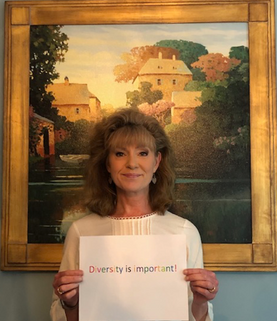 Diversity and variation — what is the difference? We can think of diversity as the state of variation within a larger population. Statistics is used for many things, one of which is to understand variation and the sources that cause it.
Diversity and variation — what is the difference? We can think of diversity as the state of variation within a larger population. Statistics is used for many things, one of which is to understand variation and the sources that cause it.
Some variation comes from the measurement process itself. Measurement and other sources of variation are important to understand so that we can better understand our world and draw useful inferences from our data.
Because JMP is used by many in industrial process applications, we often talk about understanding and controlling sources of variation to realize more consistent processes and outcomes. But when we more broadly consider variation in our world, the goals may simply be to better understand it and appreciate it. For instance, in soil composition, we have yet to understand or fully appreciate its variation with so much in the microflora group yet to be classified.
More relevant to this post, what variation do we understand and appreciate in sexuality or gender? What is gender?
As a child, I leafed through many of my parents’ scientific books. With my father a chemistry professor and my mother a nurse, there were a variety of topics to explore. I will never forget learning about the fact that some people are born with atypical genitalia that seem to be in between what we consider to be male and female. A different term was used then, but today the term is intersex.
It is the term used to express the natural biological variation that occurs in the gender spectrum (it occurs in other mammals as well). The Intersex Society of North America (ISNA) defines it as “a general term used for a variety of conditions in which a person is born with a reproductive or sexual anatomy that doesn’t seem to fit the typical definitions of female or male.”
Several factors are motivating me to write this blog post. I recently facilitated a fascinating discussion for JMP Discovery Summit with these esteemed award-winning individuals:
The examples in Criado Perez’s book are various examples of dark data, thus the overlap (by the way, I highly recommend both books!). Given recent examples of gender bias and dark data related to COVID, we explored other topics, one of which was “one-size-fits-all medicine.” How should the biological variation that occurs in nature related to what we term “sex” be taken into account in the development of drugs and vaccines and their dosage?
Another set of motivating factors is that it’s Pride Month. Inclusion is important to me, since we are all unique and there is value in that; I want to live in a world where people can be comfortable in their own skins for who they are.
While intersex is one aspect of sexual identity and LGBTQ+ is much broader, intersex does shine a light on the wider gender spectrum, reminding us that we shouldn’t constrain our thinking to binary male/female. I am grateful to the ISNA for providing such an informative website and for citing the research of Anne Fausto-Sterling, author of the recently updated Sexing the Body: Gender Politics and the Construction of Sexuality(which I am reading and it is most interesting!) and Alice Domurat Dreger, author of the article, Ambiguous Sex—or Ambivalent Medicine? Ethical Issues in the Treatment of Intersexuality. The ISNA includes some summary statistics from Fausto-Sterling for her research into the approximate number of sex variations and has made these approximations from her research available on its web site. I took the liberty of creating a JMP graph:

In this graph, we are looking at some nonbinary gender variation — something most of us have not seen. Given that the intent of Fausto-Sterling’s research was to review the medical literature from 1955 to 1998 (in hopes of estimating the frequency of sex variations), and that there is still no widespread agreement on what counts as intersex, these conditions are likely underrepresented.
What about other sex variations that we don’t see or that may not have a medical label? Or attempted measurements to determine if there are more as yet unknown variations that ultimately affect a person’s sexual identity? While science evolves, what we were taught many years ago may not have. According to ISNA:
”So now we have genes on the Y that can turn females with XX chromosomes into males and genes on the X that can turn males with XY chromosomes into females. . . wow! Maleness and femaleness are NOT determined by having an X or a Y, since switching a couple of genes around can turn things upside down.”
Wow is right! The ISNA cites that in the US there are some 7,500 men without a Y chromosome and an equal number of women who have XY instead of XX.
This Gallup poll estimates that lesbian, gay, bisexual or transgender identification has risen to 5.6% in the US (percentages total more than 100% because respondents could choose more than one category):

In Thomas Page McBee’s brilliant New York Times article, My Decade in American Manhood, he writes, “We are, all of us, in a constant stage of negotiation with the political and the cultural forces attempting to shape us into simple, translatable packages.” This affords us the opportunity to further question how our ideas about gender have been shaped.
Variation is ubiquitous, even if we can’t always see it. Diversity is a gift. In recognizing it as such, may it help us more greatly appreciate the gift of our many differences.
You must be a registered user to add a comment. If you've already registered, sign in. Otherwise, register and sign in.